Welcome to our guide on the best perennial flowers for Oregon! In this article, we have curated a list of 15 beautiful and reliable flowering plants that thrive in Oregon’s unique climate. Whether you’re an experienced gardener or a beginner, these flowers are sure to bring color and charm to your garden year after year.
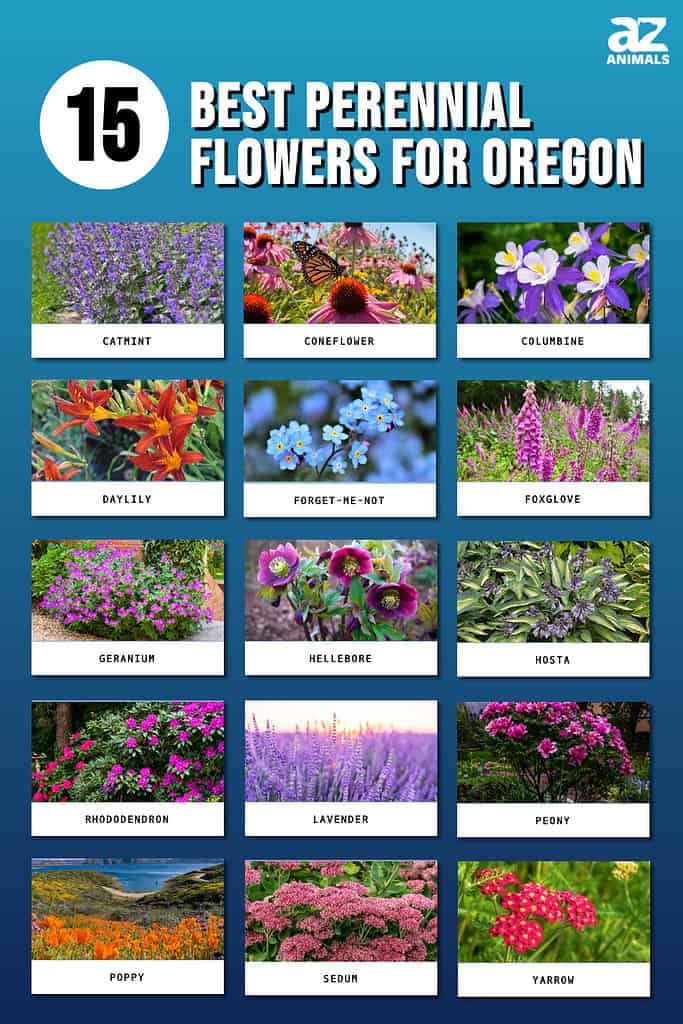
Gardening Climate of Oregon
Oregon is known for its diverse climate, ranging from the wet, temperate climate of the coast to the dry, high desert of the east. The US Department of Agriculture (USDA) assigns hardiness zones to regions based on average winter temperatures, and Oregon is within zones 6 through 9. This means that gardeners in the state have a wide variety of plants from which to choose.
The biggest difference in the climate between the east and west of the state is rain. The west sees much more precipitation than the east, which can be a challenge for gardeners, as some plants may require more or less water than the region’s average rainfall provides. Additionally, the region’s frequent winds can cause soil erosion, necessitating soil amendments or mulch to protect the soil.
Oregonian gardeners may also have to deal with pests such as slugs, snails, and aphids. These can be managed through the use of barriers, organic pesticides, or companion plants. All in all, Oregon’s diverse climate and terrain provide many challenges and opportunities for gardeners to explore.
15 Best Perennial Flowers for Oregon
There are dozens of perennial flowers that will grow in Oregon. Here are a few of our favorites!
1. Catmint

The catmint plant really does attract cats!
©Anna Gratys/Shutterstock.com
Catmint is a resilient herbaceous perennial that is easy to care for and blooms from late spring to early summer. Plant catmint in well-drained soil in full sun or partial shade as soon as the soil can be worked in the spring. It requires little maintenance and needs to be cut back after its first blooming to encourage another round of blooms. Catmint is hardy to USDA zones 4 through 9. Be sure to water regularly and fertilize every few weeks during the growing season for best results. Enjoy this fragrant, easy-to-grow plant in your garden!
2. Coneflower
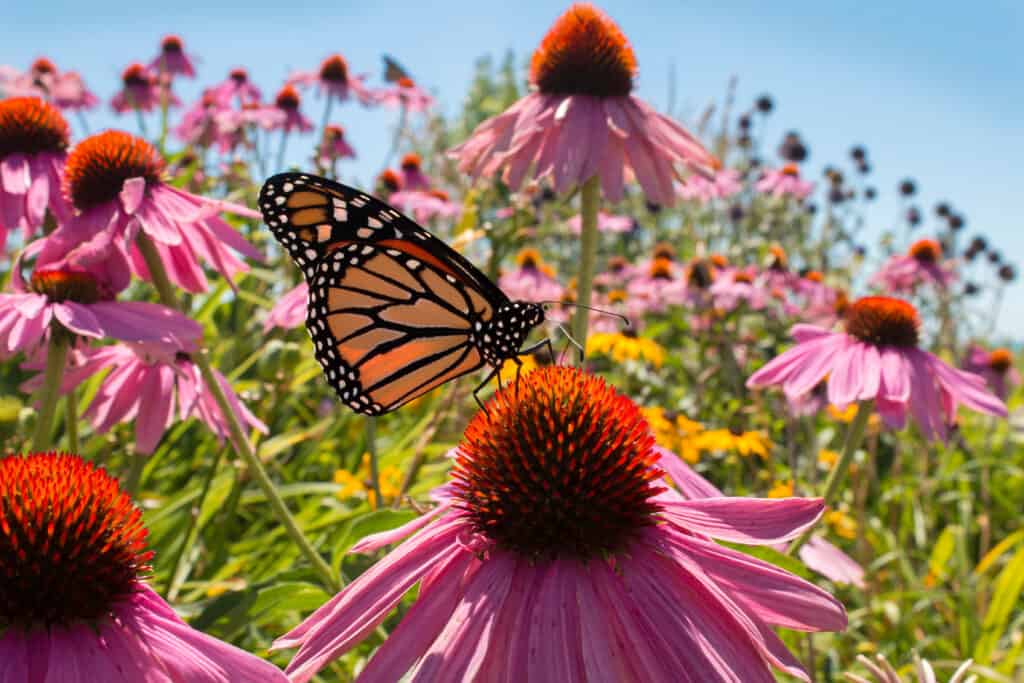
The bright, smiling face of coneflowers is an iconic symbol of summer.
©Media Marketing/Shutterstock.com
Coneflowers are popular perennials for Oregon gardens and landscapes due to their beautiful blooms. When to plant coneflower depends on the hardiness zone, but it’s best to plant in spring or early summer. Coneflowers typically bloom from summer through early fall. They require full sun and well-drained soil for optimal growth. Keep the soil moist but not soggy, and provide occasional deep watering. Additionally, coneflowers are very low-maintenance and can survive through most hardiness zones. With proper care, coneflower will bring long-lasting beauty to any garden.
3. Columbine
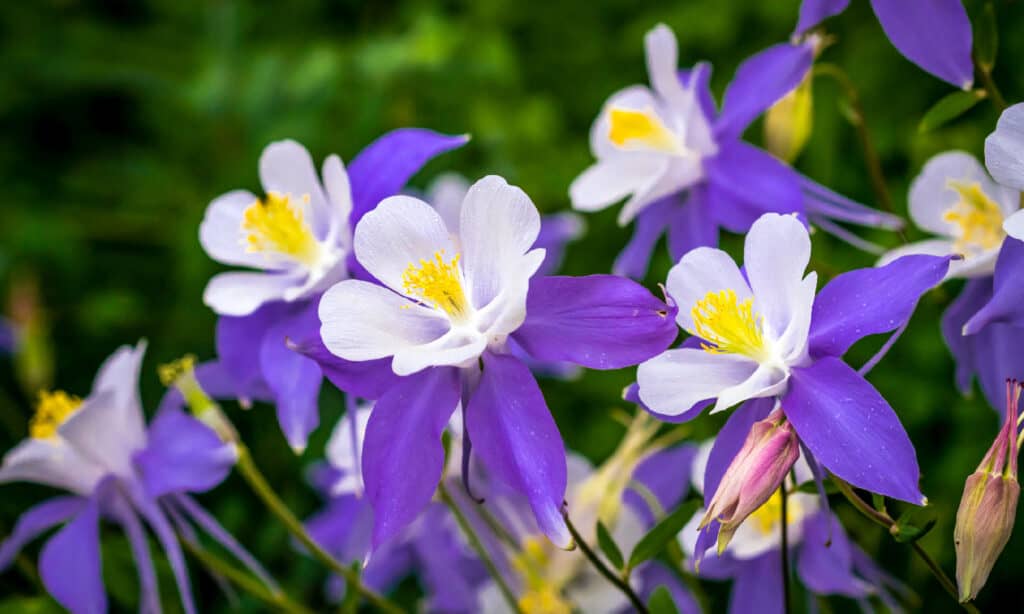
There are a wide variety of columbine colors to choose from.
©iStock.com/tvirbickis
Columbine is a beautiful perennial flower that is relatively easy to grow. It should be planted in late summer or early fall in USDA hardiness zones 3-9. Columbine will bloom in early or mid-spring and will need full sun to partial shade and well-drained soil for optimal growth. Caring for columbine is easy—it only requires occasional watering and fertilizing. Be sure to deadhead spent blooms to encourage re-bloom. With its stunning blooms and ease of care, columbine is a great perennial flower for Oregon.
4. Daylily
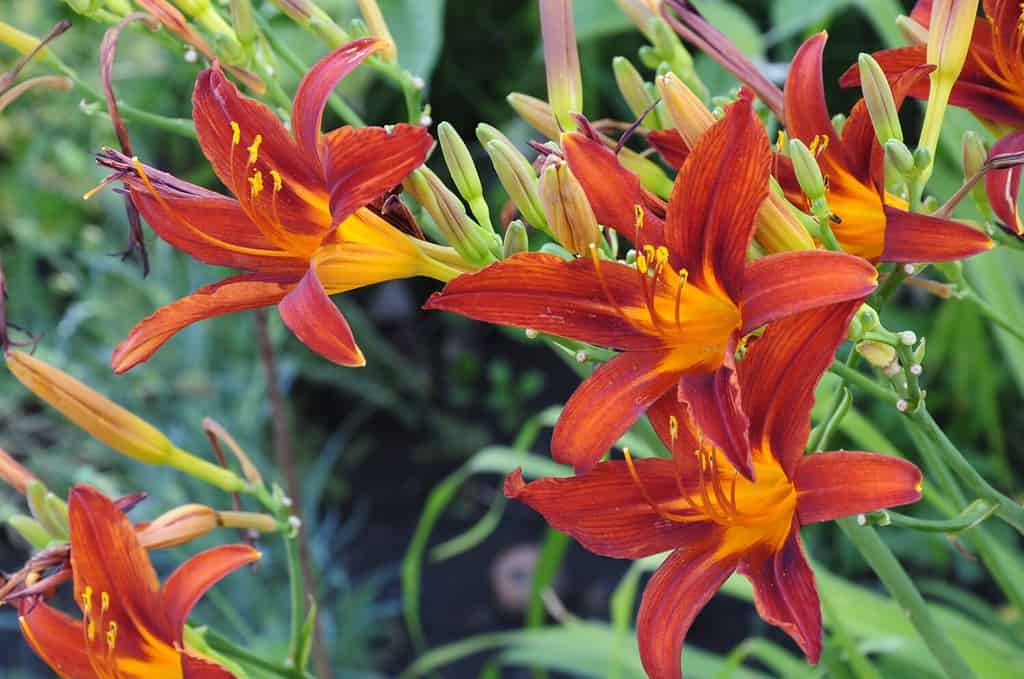
Some newer cultivars of daylily are everblooming.
©Fayka2008/Shutterstock.com
Daylilies are a popular and hardy flower. To get the best results, they should be planted in early spring when temperatures are warmer. Daylilies typically bloom for about four weeks and come in a variety of colors. To maintain healthy daylilies, they should receive at least six hours of direct sunlight a day and should have soil that is kept moist. Daylilies are hardy in USDA zones 3 to 9 and can tolerate some frost. With proper care, daylilies can bring beauty and color to your garden for years to come.
5. Forget-me-not
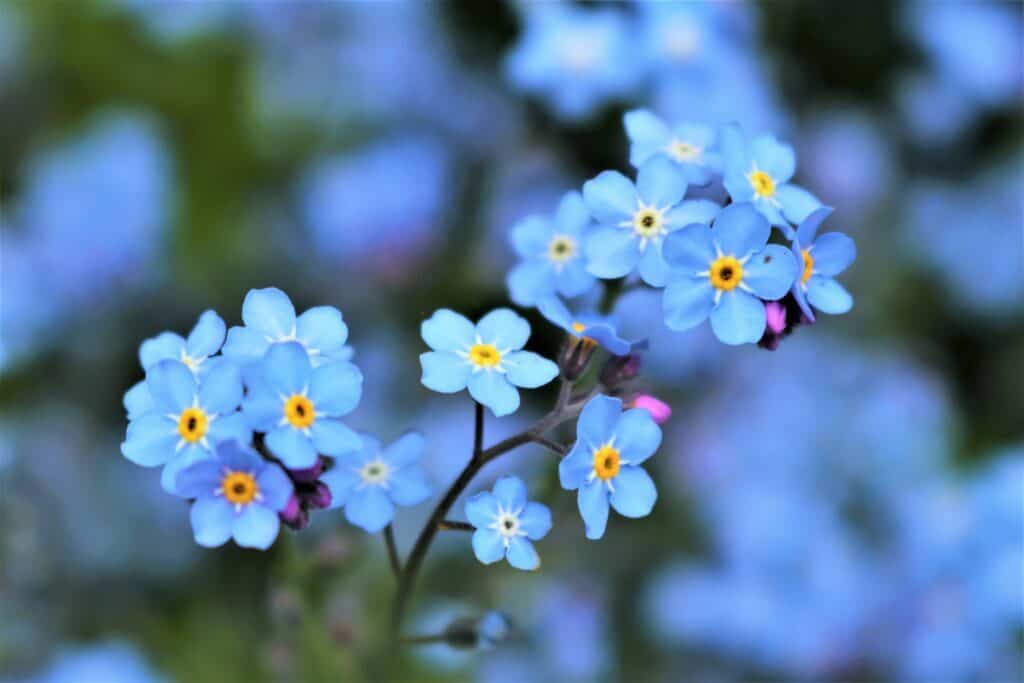
The blooms of forget-me-nots do not last long, but they are a happy addition to any garden bed.
©iStock.com/Agnieszka Klimaszewska
Forget-me-nots are easy to grow and can add a colorful touch to your garden. Plant them in the spring or early summer, and they will bloom from mid-spring to early summer. To care for them, water regularly and make sure the soil is well-drained. They are hardy in zones 3-8. With minimal maintenance, you can enjoy beautiful forget-me-nots in your garden for years to come.
6. Foxglove
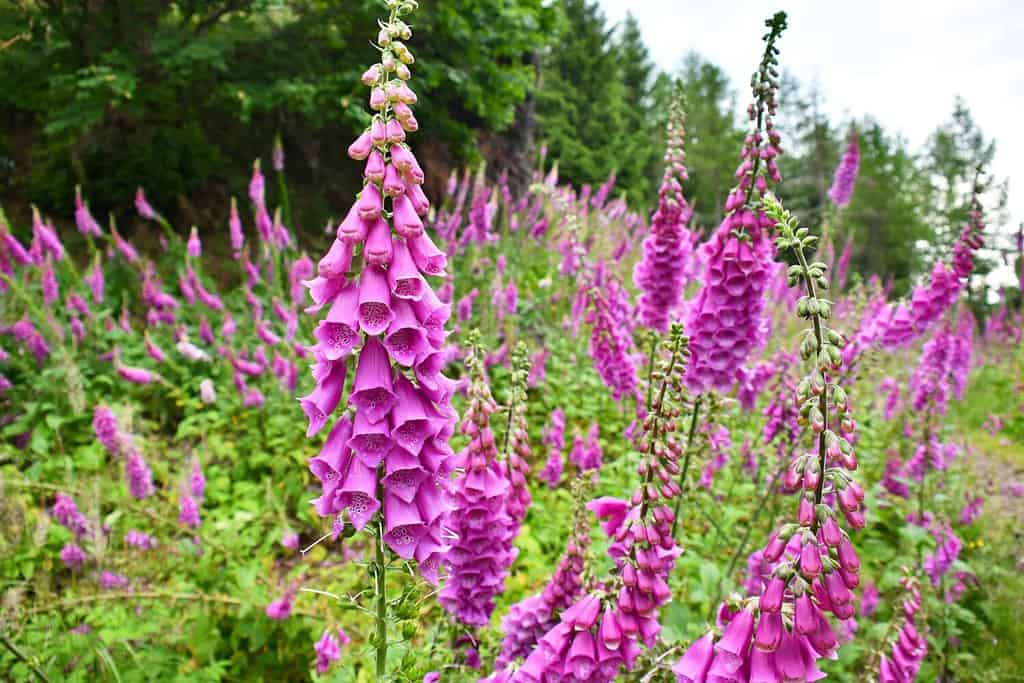
The gorgeous foxglove plant is poisonous to pets, so gardeners beware.
©HAL-9000/Shutterstock.com
Foxglove is a beautiful flower that is easy to grow. To get the best results, plant it in early spring or late fall in hardiness zones 3-9. When it blooms, it produces tall spikes of bell-shaped flowers that come in a variety of colors.
To ensure optimal growth, foxglove needs regular watering and rich soil in full or partial sunlight. It also benefits from occasional fertilization during the growing season. Deadheading the flowers will help to extend the blooming period.
In addition, foxglove is tolerant of a wide range of temperatures and is generally considered to be a low-maintenance plant. However, it can become invasive in some areas, so be sure to monitor its growth carefully. With proper care, foxglove is a wonderful perennial flower for Oregon.
7. Geranium
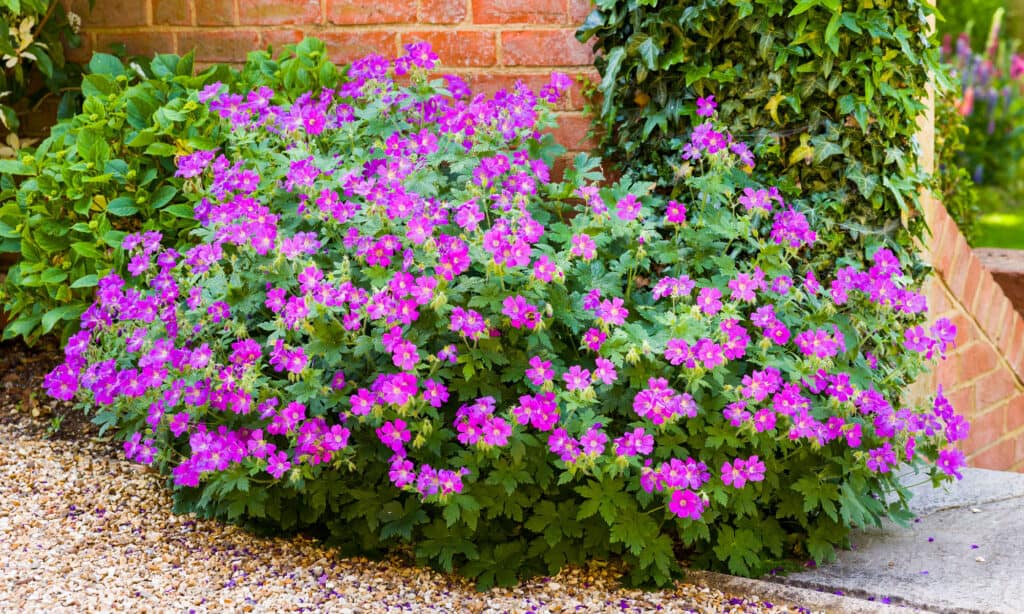
There are many varieties of hardy perennial geraniums.
©Paul Maguire/Shutterstock.com
Perennial Geraniums are a beautiful addition to any garden. Plant them in the spring, and they will bloom in the summer and fall. To ensure the best success, make sure you give them plenty of sunshine and water them regularly. They are relatively low maintenance and can be grown in USDA Hardiness Zones 4-9. To keep them looking their best, you may need to trim or deadhead them occasionally. Geraniums are easy to grow and will reward you with their colorful blooms and long-lasting presence.
8. Hellebore
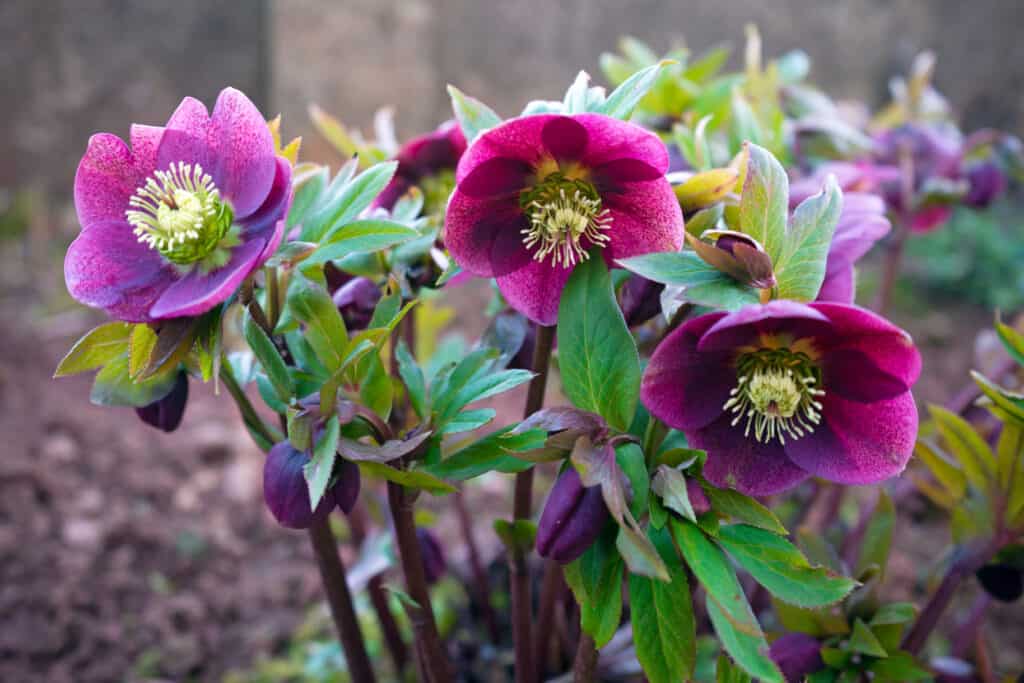
Be sure to stake your hellebores so they don’t topple over.
©iStock.com/Maksims Grigorjevs
Hellebore is a beautiful and resilient flower that is easy to grow in many climates. To plant it, choose a spot that receives partial shade and has plenty of organic matter in the soil. In most climates, the best time to plant hellebore is in the fall or early spring.
Hellebore blooms in late winter or early spring with white, pink, or purple flowers. To care for hellebore, water it regularly and fertilize it twice a year, once in the spring and once in the fall. It is hardy in USDA Hardiness Zones 4-9.
9. Hosta

We usually grow hostas for their beautiful foliage, but they do also have flowers.
©Gardens by Design/Shutterstock.com
Hosta is a beautiful and easy-to-grow perennial that is perfect for adding texture and color to your garden. Planting hosta is best done in early spring or fall, depending on your hardiness zone. In the spring, hosta will bloom with trumpet-shaped flowers in shades of lavender, white, or purple.
Hosta is low-maintenance and requires minimal care. It grows best in moist, well-drained soil and full to partial shade. Hosta is also quite hardy and can survive in USDA hardiness zones 3-9. To keep your hosta healthy, fertilize it in the spring and water it regularly. With its easy care requirements and stunning foliage, the hosta is a great perennial flower for Oregon gardens.
10. Rhododendron
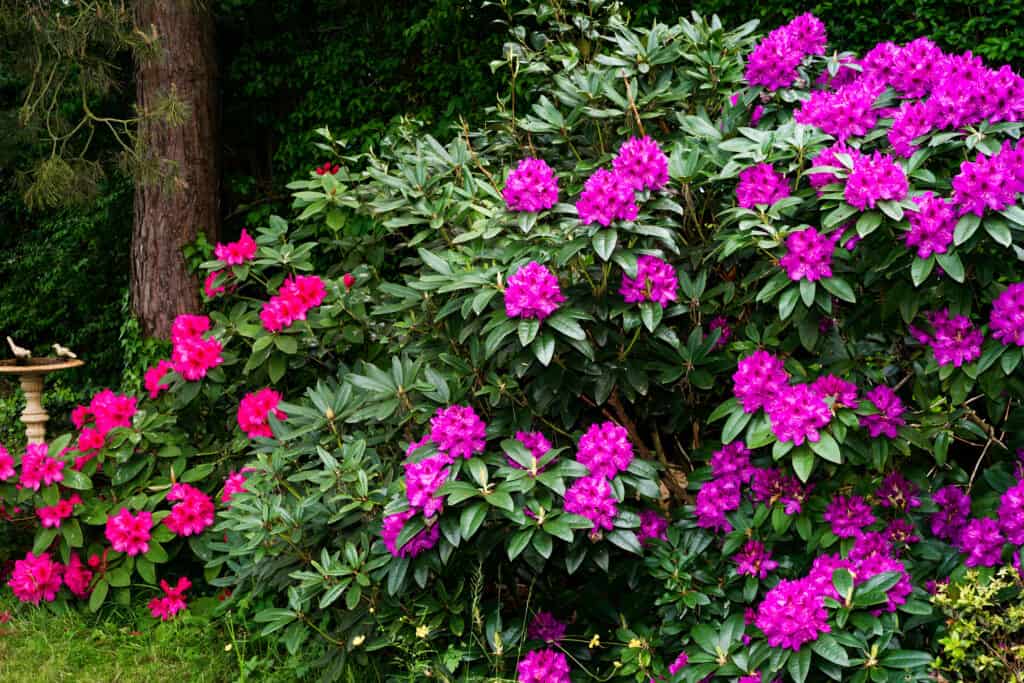
This flowering shrub can get as tall as your house!
©iStock.com/Jean-Luc Farges
Rhododendrons are easy-to-grow evergreen shrubs that will add a splash of color to any garden. To ensure success, you should plant your rhododendron in early spring or fall, depending on your hardiness zone. These plants will bloom in late spring with large clusters of fragrant, colorful flowers.
To keep your rhododendron looking its best, you should provide it with plenty of organic matter in the soil, water regularly and protect it from direct sunlight. Rhododendrons are hardy in Zones 4-9 and tend to do best in cooler climates.
11. Lavender
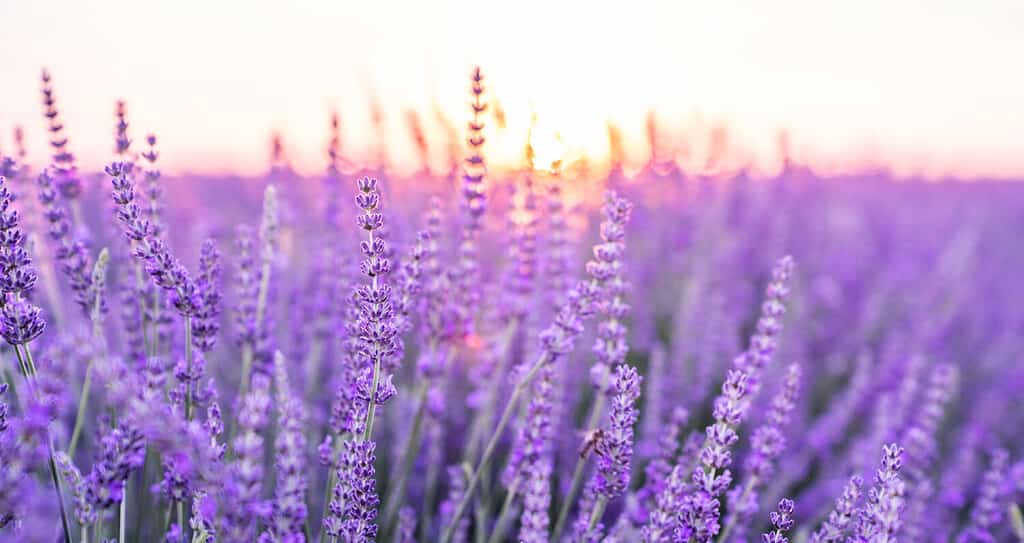
If you live in the drier parts of Oregon, consider lavender or another Mediterranean plant.
©ESstock/Shutterstock.com
Lavender is a great perennial flower for Oregon. Planting it is easy and rewarding as long as you know when and how to care for it. The best time to plant lavender is in early spring when the soil is warm and the days are getting longer. It will bloom from mid-summer to early fall and will require minimal care during the season.
Water it regularly and make sure it gets plenty of sunlight. You may need to prune the plant at the end of the season to promote new growth the following year. Lavender is hardy in USDA Zones 5-8, so make sure your region is suitable before planting. Choose a spot with well-draining soil and plenty of sunlight.
12. Peony

Most peony plants need a stake, or they get top-heavy and fall over.
©Flower_Garden/Shutterstock.com
Peonies are hardy and beautiful flowers that are perfect for the garden. Planting peonies is best done in the fall, and they will bloom in early spring. To care for peonies, they require full sun and well-draining soil. They also benefit from a layer of mulch to help retain moisture and keep their roots cool. Peonies are hardy in USDA hardiness zones 3-8, so they can be grown in many parts of the country. With proper care, peonies can provide years of beauty to the garden.
13. Poppy
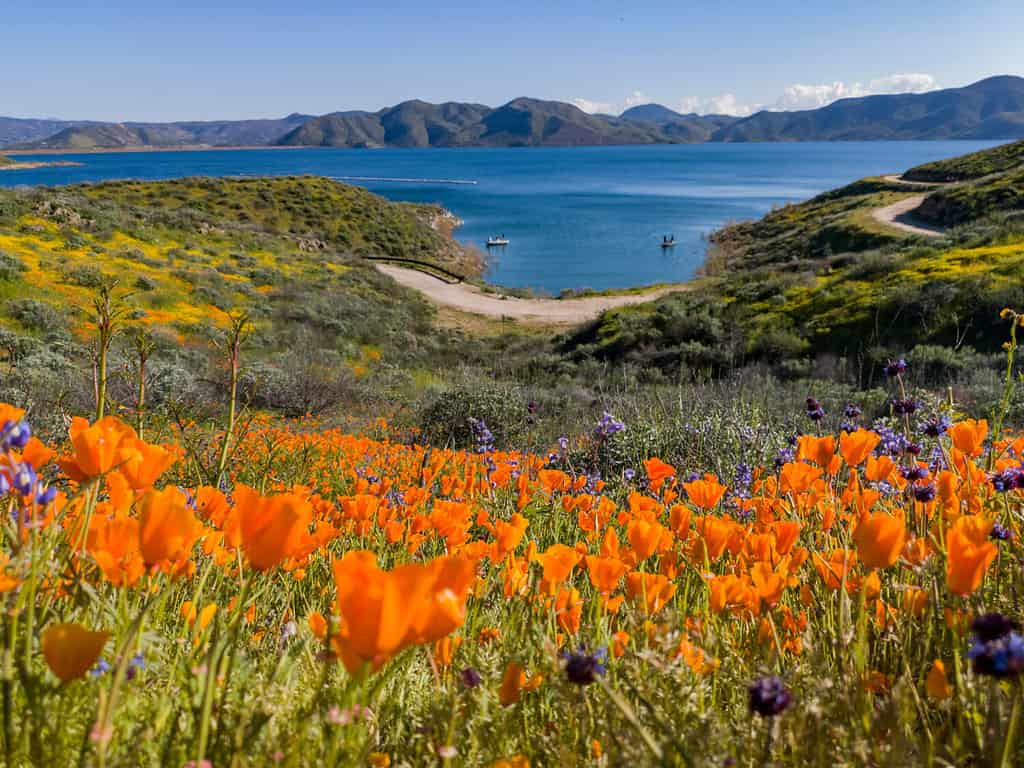
The California poppy is a great perennial flower for Oregon.
©Kit Leong/Shutterstock.com
Poppies are beautiful and easy-to-grow perennial flowers for Oregon. To get started, plant poppies in early spring. Depending on the variety, they will bloom from late spring to early summer.
Poppies require very little care. They thrive in well-drained soil and require full sun. Make sure to water regularly and fertilize once per year. These flowers are hardy in USDA zones 3-9. In colder climates, you can plant poppies early and cover them with mulch for protection over the winter.
14. Sedum
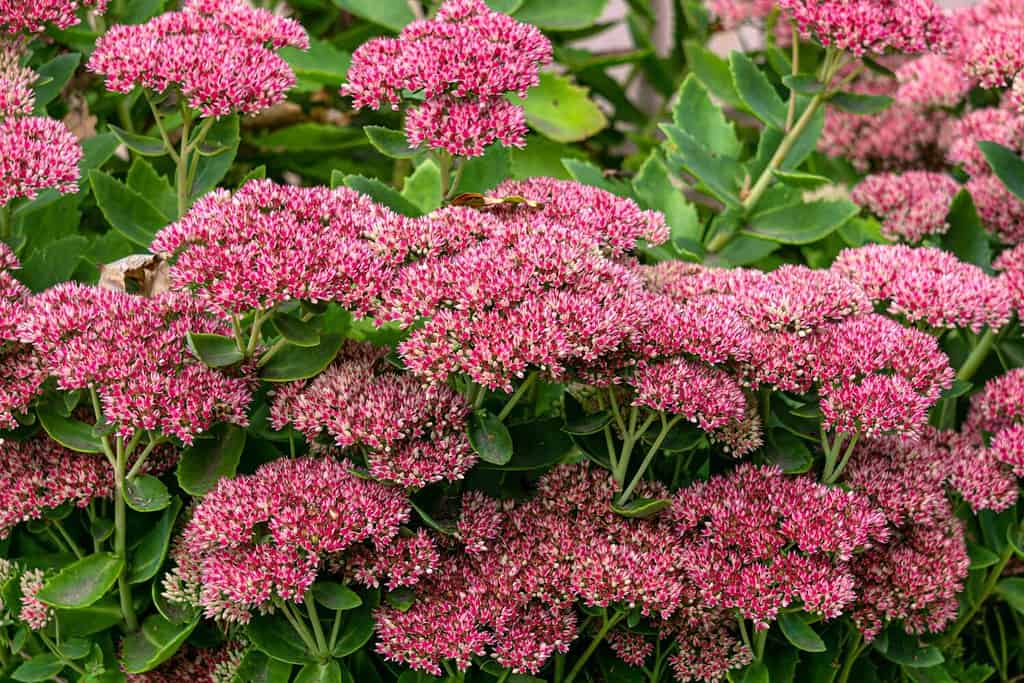
Sedums thrive in hot and arid climates. The taller, upright sedums are awesome cut vase flowers.
©Obraz/Shutterstock.com
Sedum is a hardy and easy-to-care-for plant that can add texture and color to any garden. It blooms from late summer through late fall and is best planted in early spring. To ensure that your sedum grows healthy and strong, it requires well-draining soil and full sun to partial shade. To keep your sedum looking its best, be sure to water it regularly and trim off any wilted or dead foliage. Sedum is hardy in USDA Hardiness Zones 3-9, making it an ideal perennial flower for Oregon.
15. Yarrow
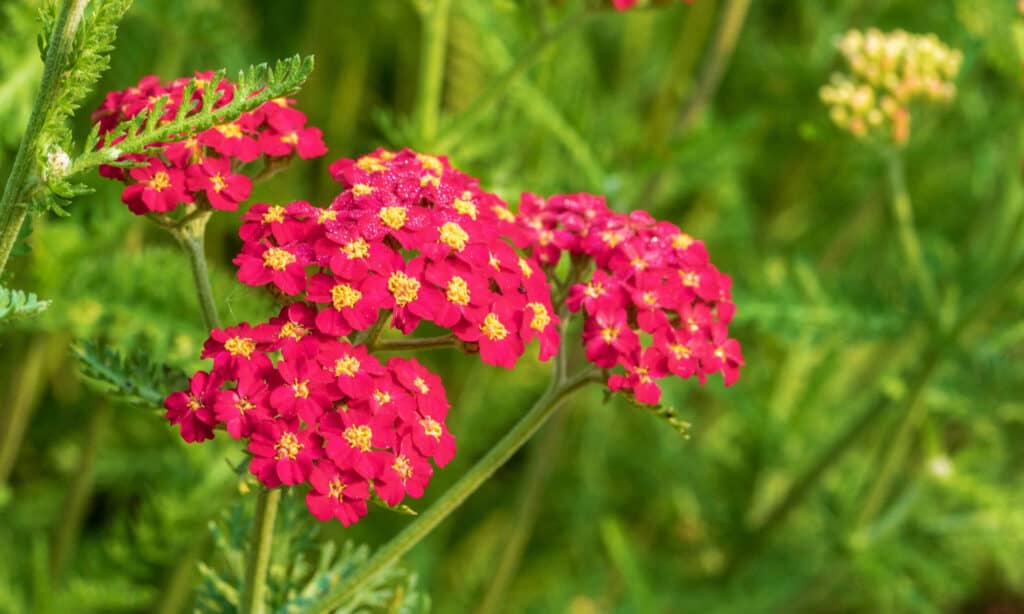
If you want a perennial flower for Oregon that will attract pollinators, consider a yarrow.
©Jennifer Yakey-Ault/Shutterstock.com
Yarrow is an easy-to-grow, drought-tolerant perennial flower that blooms throughout the summer. To get the best results, you should plant yarrow in early spring or late fall in hardiness zones 3-9. When planting, be sure to give it plenty of room to spread, as it can grow up to 2-3 feet in width.
To ensure optimal growth, yarrow requires full sun and well-drained soil. Water regularly and fertilize twice a year with a balanced fertilizer. Deadheading spent blooms will encourage more flowers and reduce self-seeding.
Yarrow is a low-maintenance plant that is hardy and drought-tolerant. Its bright, daisy-like flowers come in a variety of colors, including yellow, pink, white, and red. Yarrow blooms from late spring to early fall, providing a long season of color and texture in the garden.
The photo featured at the top of this post is © knelson20/Shutterstock.com
Thank you for reading! Have some feedback for us? Contact the AZ Animals editorial team.







